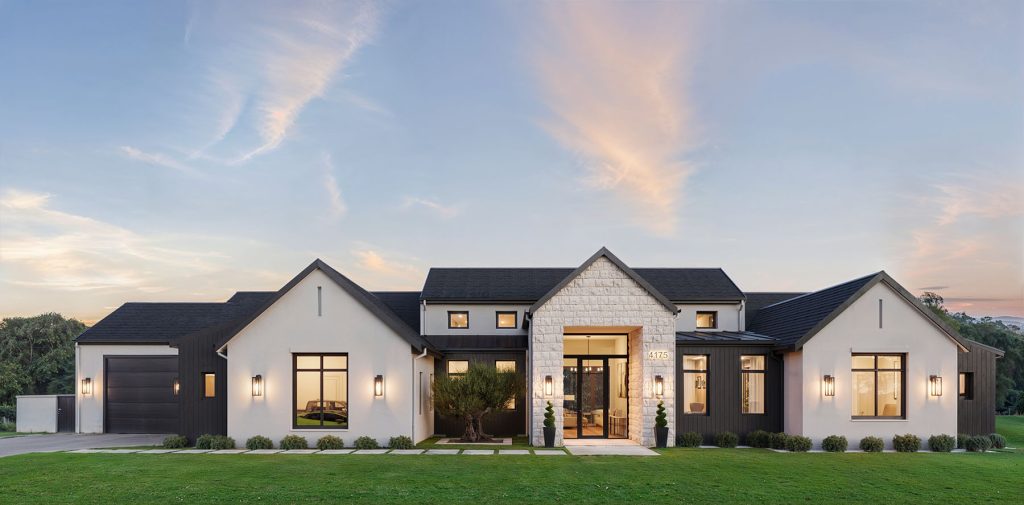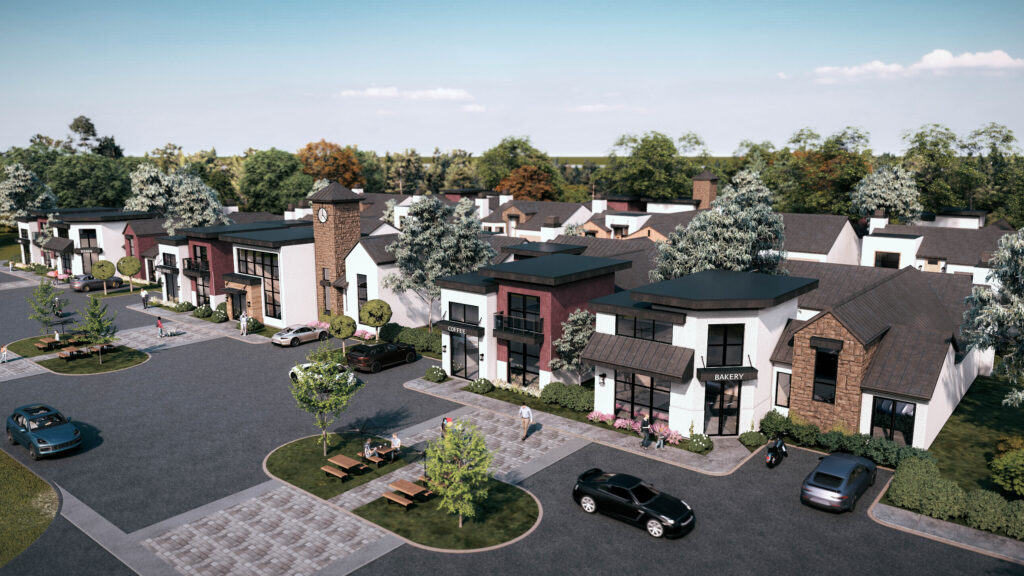In today’s fast-evolving planning and architectural landscape, commercial site planning and land planning have become more innovative than ever. Site planners and architects are implementing cutting-edge techniques to create functional, sustainable, and attractive spaces that meet the needs of today’s consumers.
Whether commercial building planning or mixed-use developments, these innovative site planning methods are shaping the future of urban environments. Below are some of the most forward-thinking site planning techniques shaping modern developments today:
1. Mixed-Use Commercial Developments
Gone are the days of isolated residential and commercial zones. Commercial site planning is increasingly moving towards mixed-use developments, where residential, retail, and office spaces are integrated into one area. This not only optimizes land use but also creates vibrant, live-work-play environments that attract businesses and residents alike. The integrated approach to site planning fosters a vibrant community atmosphere while maximizing space.
Why It Works:
- Efficient land use: Combining different functions into one area maximizes the value of limited land.
- Increased foot traffic: Mixed-use developments generate higher levels of traffic for commercial tenants, improving business viability.
- Sustainability: Reducing commuting distances helps lower carbon emissions, making these developments eco-friendly and appealing to potential tenants.
2. Transit-Oriented Commercial Planning
With growing environmental concerns and an increasing focus on reducing traffic congestion, transit-oriented development (TOD) has become a key strategy in land planning. TOD focuses on designing commercial buildings and communities around major public transportation hubs, which makes them more accessible to both employees and customers. TOD focuses on high-density, mixed-use developments near public transit hubs, such as train stations, bus terminals, and light rail systems. This design promotes the use of public transport, cycling, and walking, reducing dependence on cars, which is a huge draw for potential tenants.
Key Benefits:
- Improved accessibility: Proximity to public transit reduces the need for extensive parking and encourages sustainable transportation.
- Higher property values: Commercial sites near transit hubs tend to have higher demand, increasing property value and tenant interest.
- Eco-friendly: TOD reduces the reliance on cars, helping to reduce emissions and promote greener communities.
3. Green Infrastructure for Commercial Site Planning
Sustainability is no longer optional in modern developments—it’s a core principle. As such, commercial site planners are increasingly integrating green infrastructure into their designs. Eco-friendly infrastructure includes green roofs, bioswales, and permeable pavements. These innovations help manage stormwater runoff, reduce heat islands, and improve the overall environmental impact of a development. The use of renewable energy sources, such as solar panels, further enhances the environmental credentials of these developments. Plus, they appeal to today’s environmentally conscious consumers.
Benefits for Commercial Building Planning:
- Stormwater management: By using permeable surfaces and green roofs, developments can reduce flooding risks and improve water quality.
- Energy savings: Green roofs and solar panels can lower energy costs by providing natural insulation and renewable energy sources.
- Enhanced appeal: Green spaces increase the aesthetic and environmental appeal, drawing in more eco-conscious tenants and businesses.

4. Pedestrian-Friendly Commercial Areas
In commercial building planning, creating pedestrian-friendly spaces is crucial to enhancing foot traffic and creating engaging, livable environments. Wide sidewalks, green spaces, and outdoor plazas are increasingly included in commercial site planning, making areas more walkable and accessible.
Why It Matters:
- Boosts local businesses: Pedestrian-friendly commercial areas increase foot traffic and retail spending.
- Healthier environments: Walkable commercial zones encourage healthier lifestyles by promoting walking and cycling.
- Community engagement: Outdoor plazas and pedestrian zones foster a sense of community, which can drive higher foot traffic and customer loyalty.
5. Compact and Efficient Land Planning
With urban sprawl becoming increasingly unsustainable, many cities are turning to compact city models, which emphasize dense, vertical developments. This technique is particularly effective for commercial site planning, where maximizing usable space can lead to better economic outcomes. These models reduce land consumption while creating more dynamic urban environments. Compact cities are designed to prioritize accessibility, with close-knit neighborhoods and easy access to public services.
Cluster development is another innovative site planning technique, where buildings are concentrated on a portion of the site, leaving the remaining space for open areas, parks, or nature reserves. This method promotes higher-density housing or commercial units while preserving natural landscapes and reducing infrastructure costs. Cluster developments are particularly popular in suburban and rural areas, allowing for the preservation of agricultural or ecological land.
Advantages for Commercial Developments:
- Higher ROI: By using land more efficiently, developers can generate higher returns on investment.
- Reduced infrastructure costs: Compact land planning minimizes the need for extensive roadways, water, and energy infrastructure, lowering development costs.
- Sustainable design: Concentrating commercial buildings in dense areas reduces the carbon footprint of both the development and its occupants.
6. Smart Technology in Commercial Site Planning
Smart cities are no longer a futuristic concept—they’re becoming a reality in commercial building planning. The integration of smart technology into site planning allows for more efficient energy use, real-time traffic management, and enhanced security systems. Sensors, IoT (Internet of Things) devices, and AI-powered systems can monitor energy usage, traffic flow, and public services in real time. These technologies allow for more efficient resource management, personalized services, and adaptable public spaces.
How Smart Technology Enhances Commercial Developments:
- Optimized energy use: Smart buildings use IoT technology to monitor energy consumption, reducing waste and lowering costs.
- Improved safety: Advanced security systems and real-time data analytics help create safer commercial spaces.
- Enhanced tenant experience: Smart lighting, temperature controls, and parking systems improve the experience for tenants and customers, adding value to commercial properties.

7. Sustainable Water and Waste Management
In commercial building planning, managing water and waste sustainably is becoming increasingly important. Techniques like greywater recycling, rainwater harvesting, and waste-to-energy systems are being integrated into modern developments to reduce environmental impact and lower operational costs.
Many of these techniques also incorporate designs that can withstand extreme weather events such as floods and storms by raising structures above flood level and incorporating flexible infrastructure that can be easily modified in response to changing conditions.
Key Benefits:
- Lower utility costs: Water-efficient technologies reduce the overall consumption, lowering operational costs for commercial tenants.
- Environmental sustainability: Efficient waste and water management help reduce the environmental footprint of commercial buildings.
- Corporate responsibility: Tenants are increasingly interested in leasing space in buildings that support sustainable practices, making this an attractive feature in commercial developments.
8. Flexible Commercial Spaces
The rise of remote work, coworking, and shared office spaces has changed how commercial building planning is approached. Developers are now focusing on creating flexible, multi-use spaces that can easily adapt to changing business needs. This flexibility in site planning allows commercial buildings to be reconfigured as businesses grow, downsize, or evolve.
Why Flexible Spaces Are the Future:
- Adaptable: Spaces can be easily converted or resized to fit the needs of various tenants.
- Cost-efficient: Shared and flexible office spaces reduce long-term costs for both developers and tenants.
- Community-focused: Flexible commercial spaces encourage collaboration and networking among tenants, creating vibrant business communities.
Site Planning that Meets the Needs of Future Generations
Modern developments are no longer just about creating buildings and infrastructure but about designing spaces that support sustainability, community engagement, and a high quality of life. Commercial site planning is rapidly evolving to meet those demands. By embracing techniques such as mixed-use developments, green infrastructure, and smart technology, commercial building planning can achieve both economic success and sustainability. These innovative site planning techniques will continue to shape commercial developments, making them more efficient, sustainable, and adaptive to future needs. By adopting these innovative site planning techniques, cities and towns can create more resilient, livable, and environmentally responsible places to live and work.

